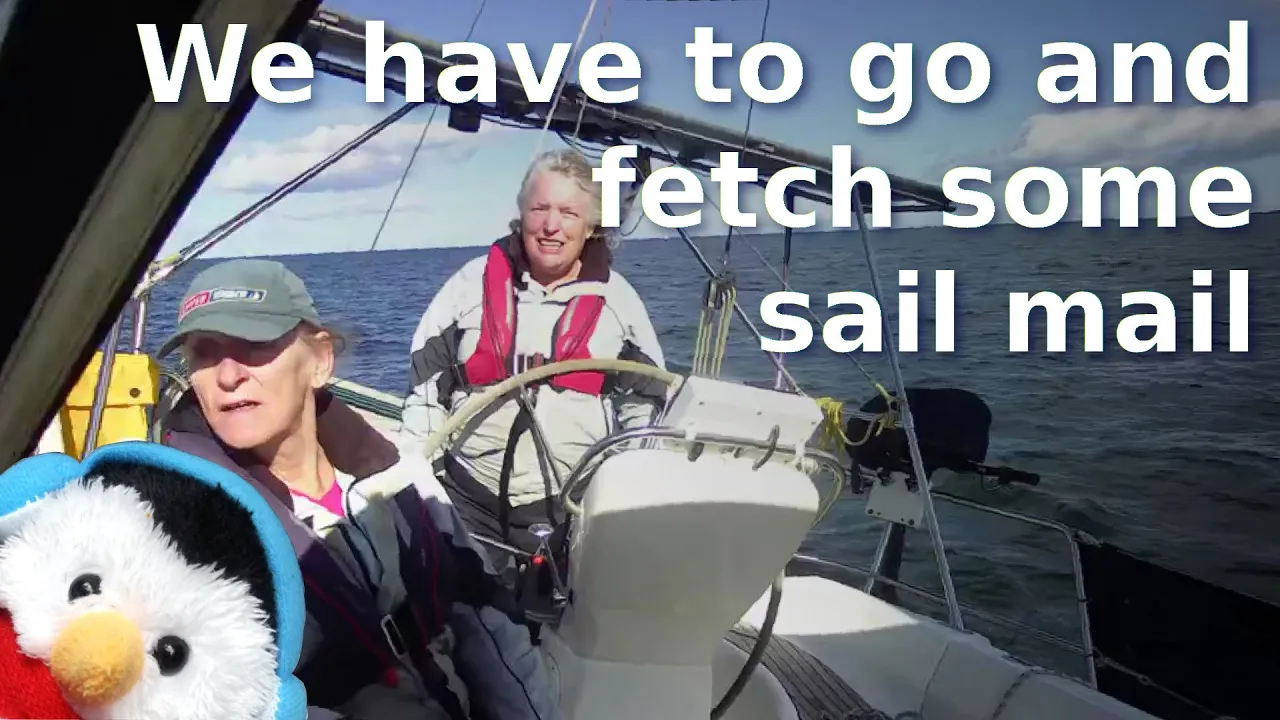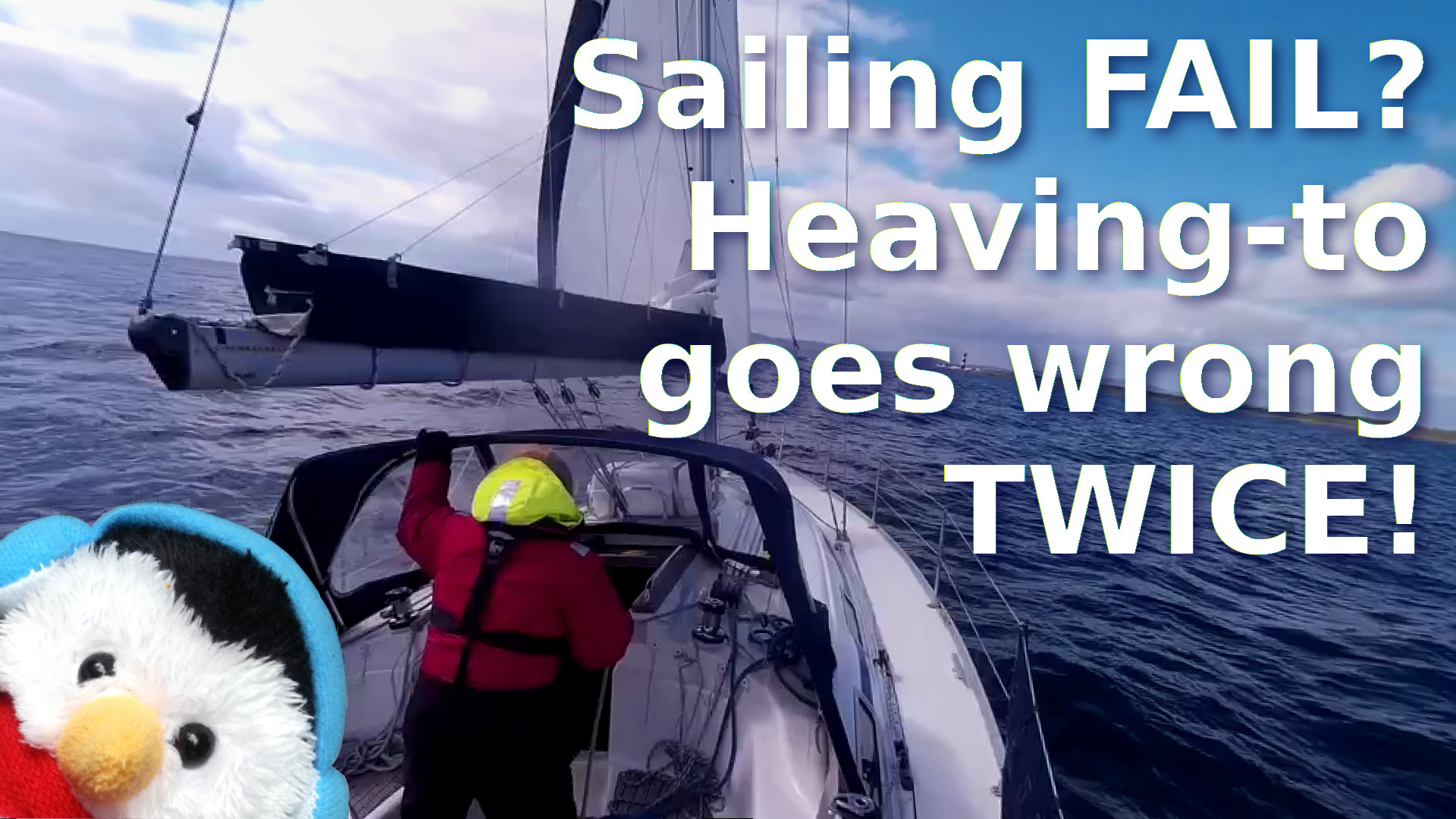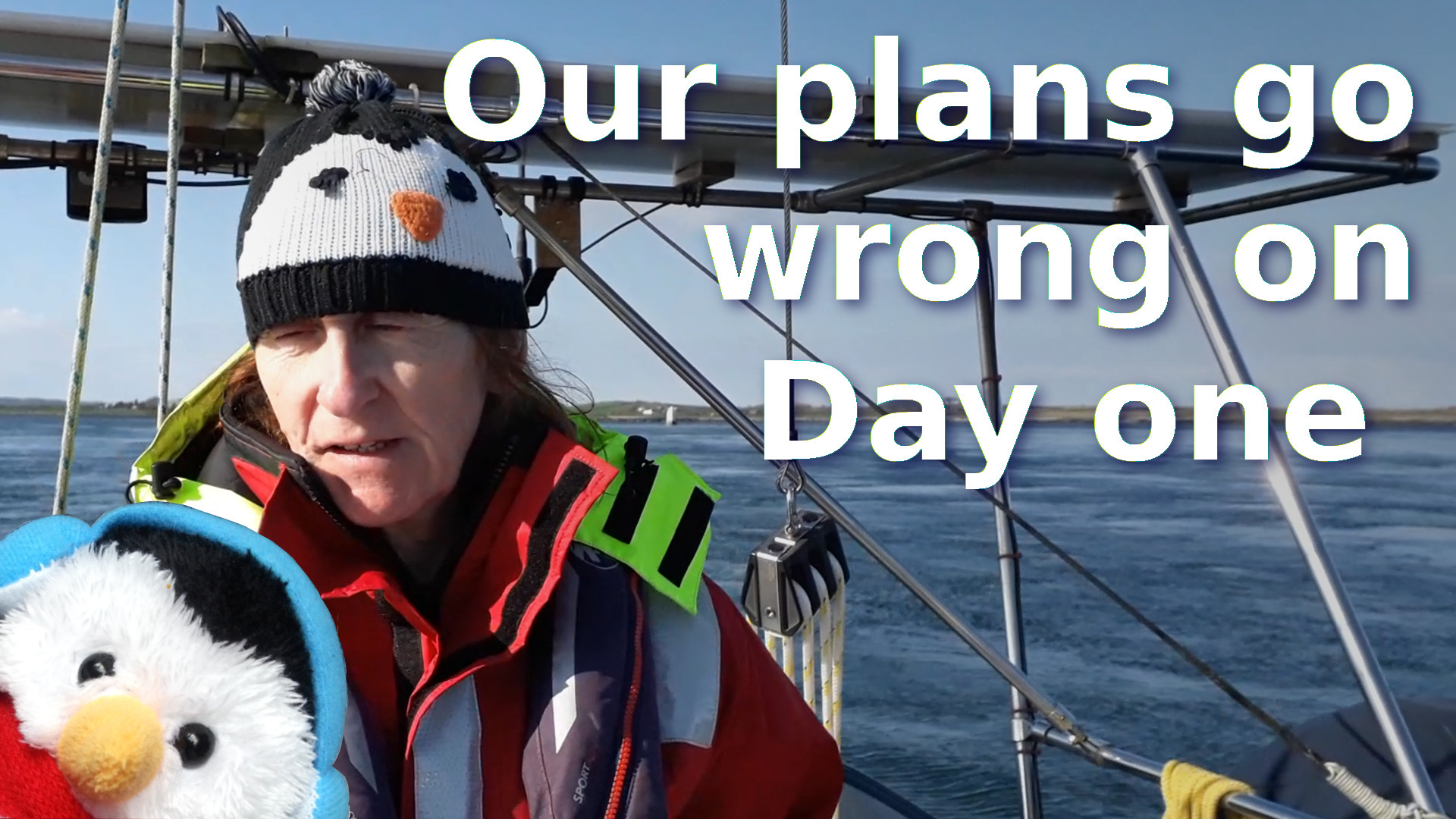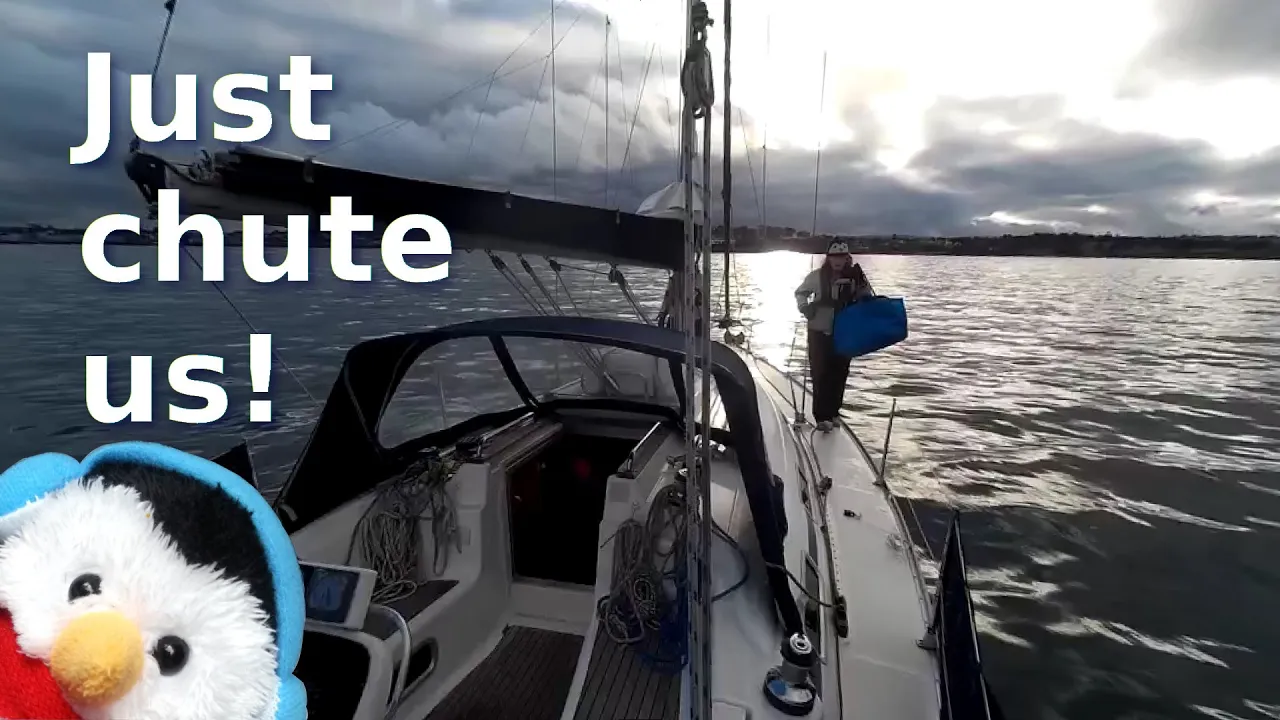The great canopy project of 2022 was at an end and it was at last time to leave Abercorn Basin. The basin was completely smooth so going astern was relatively easy, although I did panic at one point as I had not applied enough power and Salty Lass was not going the way that I intended, but I remembered that I had time to correct my mistake and we were soon on our way up Belfast Lough.
Although it was completely calm within the basin, as we proceeded up the lough, the wind strengthened, so we hoisted the main with one reef in the main and a reef in the Genoa, so that the sails were balanced. As the lough widened, the wind increased, so we heaved to and put an extra reef in the main. Of all the manoeuvrers that we have practised heaving to and putting a reef in is just so useful and I would recommend learning this particular skill sooner rather that later.
The wind increased some more so we put a third reef in, although we used a different technique to put this reef in. We will have to do a video on this technique because although I can state it worked, I am not sure where the main was in relationship to the wind.
The wind was at 25.6knots, with gusts of 29knots and we were getting white caps on the waves, in these conditions I decided to hand steer as Annie our auto pilot likes to have steady winds rather than gusts. One thing was certain it certainly improved my helming skills, while Beverley improved her trimming skills, getting the most out of our sails. The weather was clearly getting worse so we were both very happy with the decision to go into Bangor. It might be boring but it was a safe place.
I took us into Bangor, and there was a fair amount of manoeuvring that needed to be done in the Marina. I must be getting better at this steering lark as I did a fairly good job taking us into the slip.
While we were in Bangor waiting for the weather to improve, we answered the last remaining viewer question from the winter which was for some hints and tips on going astern.
- Use ropes to spring your boat as much as possible. The more you can turn your boat while still in the slip the better
- At the start of your turn, use half rudder rather than full rudder as full rudder can be used as a break. Beverley illustrated this point with a coaster which is the Salty Lass way
- Do not be afraid of using power to get the boat moving. It is particularly useful when you have wind or tide to oppose your movement so make sure that you are in control
- If you are using a wheel, face the way that you are going, that can make it easier for you to steer as you literally turn the wheel that way you want to
- Don’t panic. Boats don’t move all that quickly so you will have time to correct your mistake. Just make sure that you are in command.
We also discussed our passage plan, which had the times that the tidal flows would be in our favour. When we make a plan, we start by finding out when the tidal gates are and when they will be in our favour, we then translate this to actual times and we put these times on for a few days so that we have a window of opportunity that we can make the passage. In this particular case we wanted to go into Strangford, but according to our plan if we were delayed too long in Bangor because of weather and work, then we would have to miss Strangford as we would be making the passage in in the dark and we were not willing to do that.
As it tuned out, Beverley took longer to do the work than anticipated, so we found ourselves going down the Irish sea, one day late. We ended up motor sailing and one of the things that we have found is that we can put the main up, really close in say at 20 to the wind and get a sail assist of about a knot to a knot and a half, not a lot but better that a poke with a sharp stick













